[ad_1]
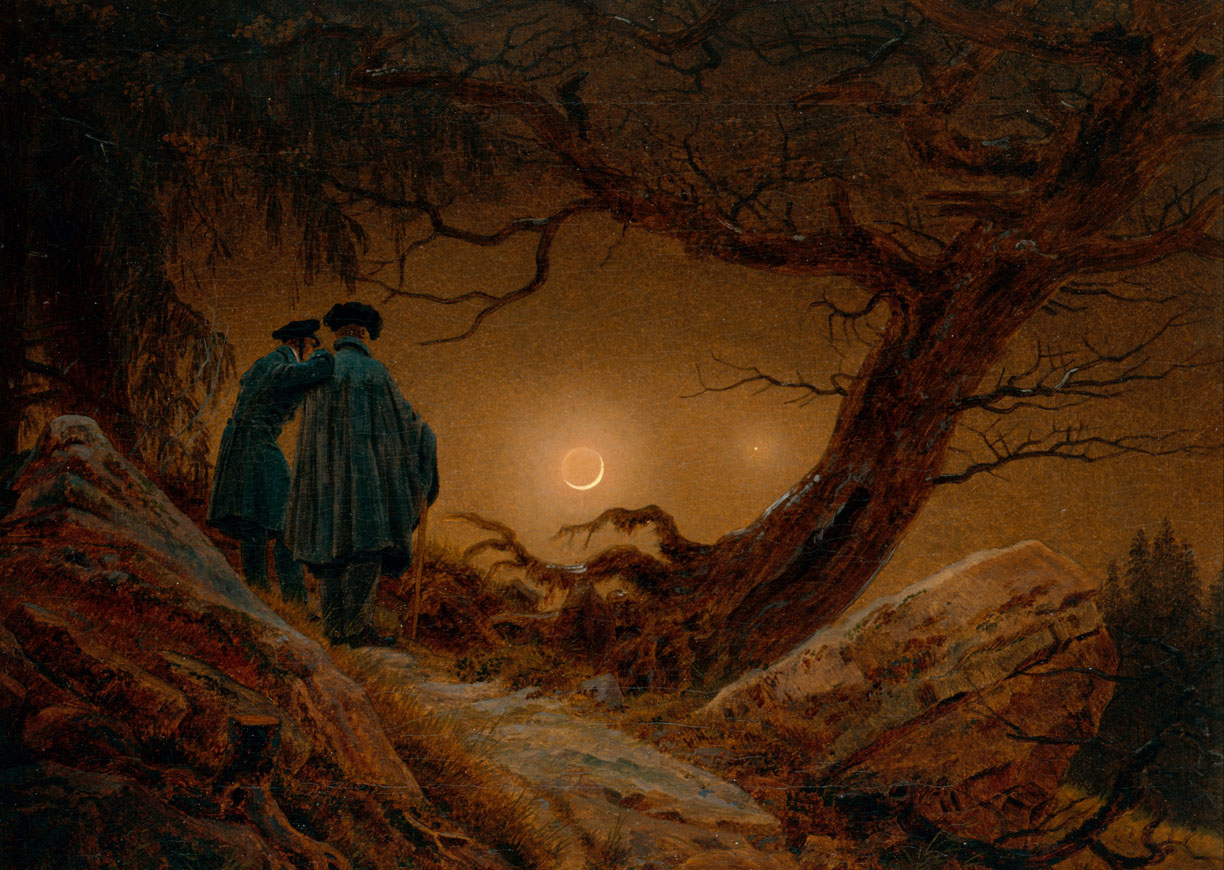
Public area
Have you ever ever checked out a crescent Moon and seen that the rim of the Earth-lit portion seems brighter?
Observers have been conscious of the phenomenon for hundreds of years. Earlier than we knew the Moon’s true nature as an opaque, rocky physique just like the Earth, some astronomers in Galileo’s time even thought the Moon may very well be translucent. Daylight streaming from behind the Moon alongside our line of sight would cross extra simply by way of the limb — the place much less materials would block the sunshine — than the middle, making the sting seem brighter.
Whereas we all know this is not how earthshine works, the notion of a glowing lunar ring has endured to the current day. I’ve seen it, as have my observing buddies. Edge-brightening even exhibits up in work just like the one featured right here, begging the query: is it an actual phenomenon or on account of human notion? Because it seems, it could be a little bit of each!
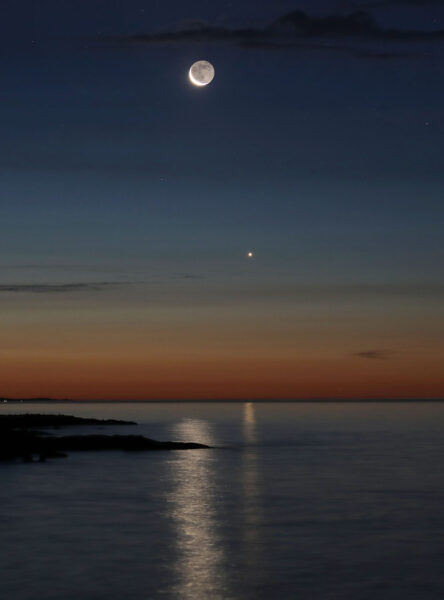
Bob King
Each lunation we’re handled to back-to-back crescents separated by the brand new Moon. Whereas a lot is made from the Full Moon and its rising (understandably so), give me a crescent anytime. Few objects within the celestial sphere are extra pleasing to behold than the petal-like Moon at nightfall or daybreak. Pointy as a knife tip but seductively curved, the crescent’s disparate qualities dovetail to make it an irresistible sight. Earthshine — daylight mirrored from Earth to the Moon and again — makes it much more compelling, particularly in the course of the 2-to-3 day interval earlier than and after a brand new Moon.
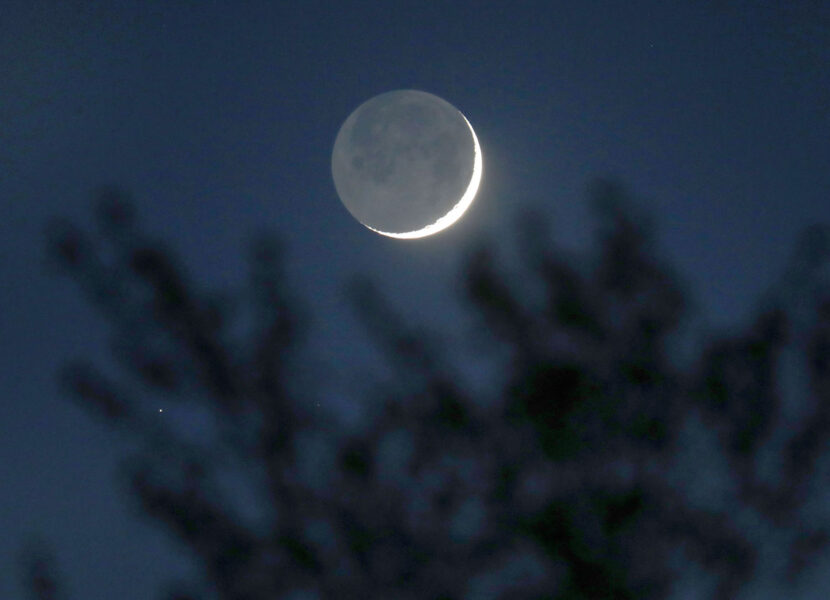
Bob King
Moon and Earth phases are complementary. Once we see a crescent, a lunar astronaut gazes at a virtually full Earth. For that motive, earthshine is brightest in the course of the Moon’s crescent part and reduces because the Moon fills out. The rising glare of the waxing sunlit portion additionally hampers earthshine’s visibility towards the center of the cycle.
I may not have seemed any additional into the matter have been it not for a name to motion from Christopher Graney, public relations officer for the Vatican Observatory Basis, and an adjunct scholar on the Vatican Observatory. He specializes within the historical past of late Sixteenth- and early Seventeenth-century astronomy and writes for the biweekly Observatory E-newsletter. He requested for assist, together with images, which may pin down the origin of the phenomenon.
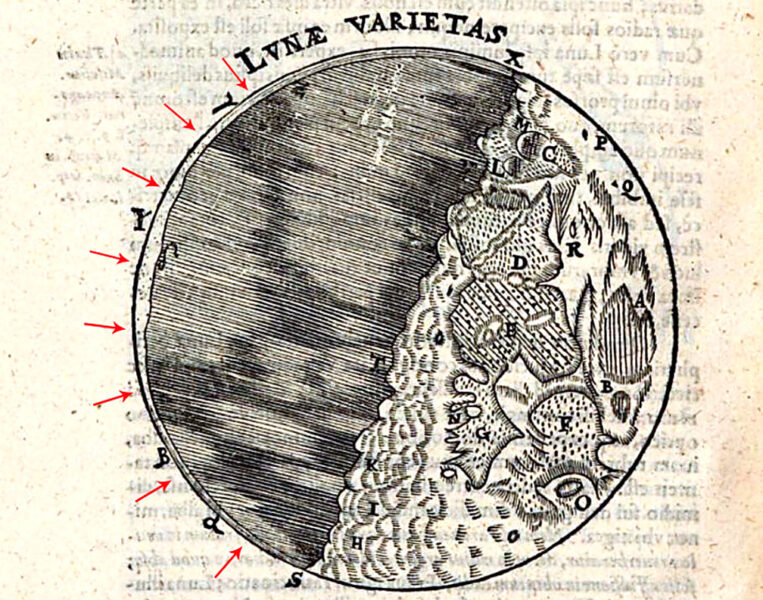
In a current column, Graney mentioned previous and current observations of the limb glow, particularly these made by early Seventeenth-century astronomers Johann Georg Locher, his mentor Christoph Scheiner, and Galileo. Scheiner and Locher have been satisfied that daylight passing by way of the Moon brought about the “secondary gentle,” the identify given earthshine of their time.
Galileo, alternatively, appropriately attributed the trigger to earth-light in his 1632 e book Dialog Regarding Two Chief World Methods. The truth is, he was so incensed by Locher’s speculation that he referred to as it “a lie that borders upon rashness.”
Commercial
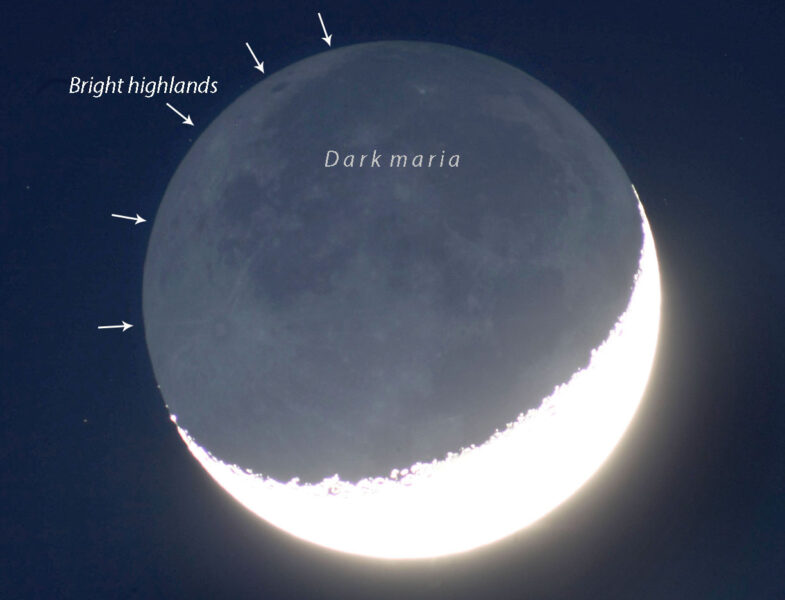
Bob King
Intrigued, I frolicked this previous June observing and photographing crescent Moons at nightfall and daybreak. I confirmed the brighter limb impact with my eyes, however because it by no means appeared in any of my photos, I needed to conclude that human notion was the trigger.
However there is a caveat: In the event you look carefully on the night crescent you may see that brilliant highlands rim the limb, whereas the huge expanse of the darkish Ocean of Storms and different maria lie inside to it. Highland supplies mirror about twice as a lot gentle because the maria, making it attainable that lunar geography performs no less than a small position in enhancing earthshine alongside the limb.
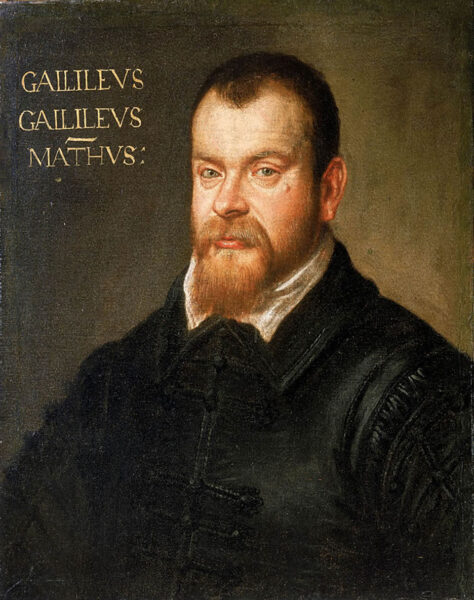
Public area
I might see the impact of the lighter-toned highlands even higher once I blocked out the sunlit crescent and used averted imaginative and prescient. However it appeared too delicate to account for the entire edge impact, so I took a better take a look at Galileo’s clarification of the secondary gentle in his Dialog. He writes:
“It’s true that the Moon exhibits such a circle when noticed in twilight at its first look after New Moon, however that originates deceptively in variations between the boundaries which terminate the lunar disk over which this secondary gentle is unfold. For on the facet towards the Solar, the sunshine is bounded by the brilliant horn of the moon; on the opposite facet, it has for its boundary the darkish subject of the twilight, in relation to which it seems lighter than the whiteness of the lunar disk— which on the opposite facet is obscured by the larger brilliance of the horns. If solely this contemporary creator (referring to Locher) had tried inserting between his eye and the first brilliance some display such because the roof of a home, or another partition, in order that solely the a part of the Moon outdoors the horn remained seen, he would have seen all of it equally luminous.”
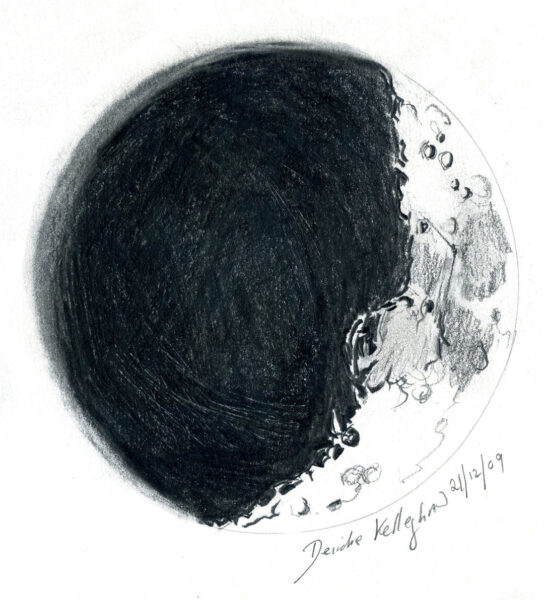
Deirdre Kelleghan
In different phrases, it is about how the human eye perceives completely different tones which can be adjoining to 1 different. Subsequent to the brilliant glare of the crescent, the earthshine seems darker. When earthshine butts up in opposition to the darker sky it seems brighter. That is additionally also called the Mach band impact, named for Austrian physicist Ernst Mach who first reported the phantasm in 1865.
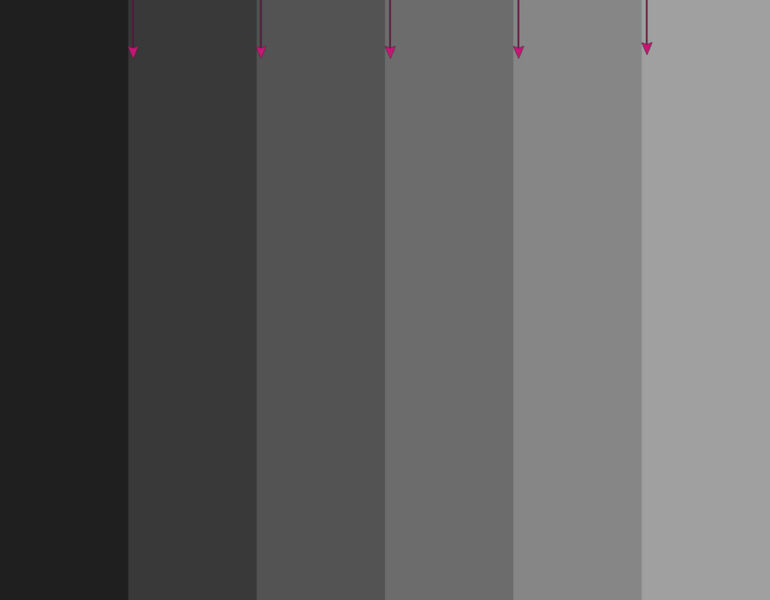
Bob King
Mach found that for those who take two grey rectangles of barely completely different shades and place them facet by facet, the distinction of their tones makes our brains see a lighter band (Mach band) the place they contact. I would supply that that is equivalent to the state of affairs with earthshine, the place grey earthlight shares a border with black (or darkish grey) sky, rendering the contact zone a shade brighter.
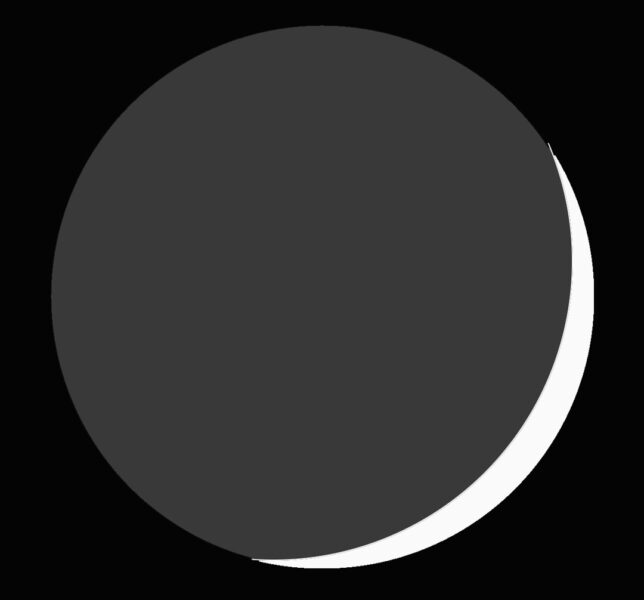
Bob King
Edge detection helps us see the place one object ends and one other begins. Animals use it to assist them distinguish well-camouflaged prey in opposition to a busy backdrop. Birds are identified to make use of contrasting edges to focus on a protected and safe touchdown. Something that makes borders simpler to see is a helpful talent.
Whereas no professional, I believe the identical capability performs a key position — together with a splash of lunar geography — in our notion of the brilliant, earthlit ring proven so convincingly within the portray. I need to thank Chris for the inspiration to look extra carefully and would love to listen to about your personal observations of the phenomenon. The following alternative to view the waxing, earthlit crescent happens between July thirtieth and August third.

[ad_2]



